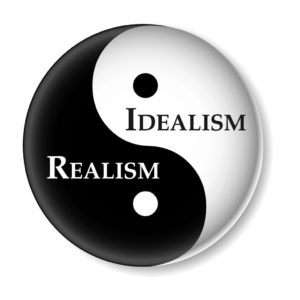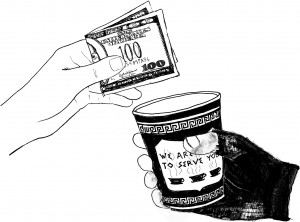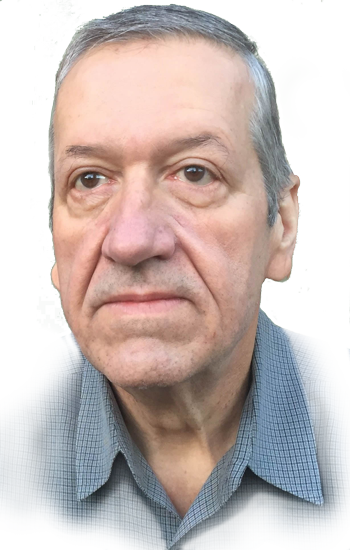Expanding the Volume of Possibilities You Make Real
By Michael’s Consortium through Stephen Cocconi
Vision is far more than seeing. It is a transformative act of taking elements that you already know and also introducing new or unfamiliar elements into formulation or design of something original or larger, perhaps even more precise; but it is a leap into a new direction for you. For your vision to be made manifest; that is to say transformed from the conceptual space of fantasy into the material reality of one’s life, it requires an increase in havingness.
 Havingness is metaphorically similar to the size of a container and its capacity to hold contents without breaking. On another parameter of understanding, it is the deepening and furthering of how far one can “see” or imagine as possible. A person who as a child lived in a simple house may now dream of a big mansion. But to build it, they will have to intellectually and emotionally broaden their comprehension of all the elements involved, and realize they will face challenges to their sense of limits in the process. That would require an expansion in their havingness.
Havingness is metaphorically similar to the size of a container and its capacity to hold contents without breaking. On another parameter of understanding, it is the deepening and furthering of how far one can “see” or imagine as possible. A person who as a child lived in a simple house may now dream of a big mansion. But to build it, they will have to intellectually and emotionally broaden their comprehension of all the elements involved, and realize they will face challenges to their sense of limits in the process. That would require an expansion in their havingness.
Havingness is a term found predominantly in spiritual discussions. It has implied deservedness or worthiness. These are related idea, but not directly incorporated into our concept of havingness. People fall within a range of havingness as either low or high. It contains elements of imagination, spirit, emotions, and action. A low havingness mentality or narrow vision – has a scope limited only to things it knows it can: acquire, control, achieve, or believe it might deserve. It is locked, possibly secure, in that such a state does not create the stress of the unknown “what if”, thus insuring perceived predictability. That does not mean that it is comfortable or desired, just that capacity to have is small. And for reasons we will convey don’t confuse the amount of things a person possesses as a measure of havingness.
Observation would suggest that humans have an initial set-point of havingness. However, it can change with time: increase or decrease. Obviously, this concept itself is not directly presented in school, but one is exposed to it everywhere. In early development, innate personality traits – the Overleaves and genetics: appearance, vitality, and other biochemical factors; exert an influence embedded within a person’s psyche that is then radiated from a person’s auric field. From there, circumstances like: parenting, education, and degree of social stability, will augment your experience and thereby modify your capacity during development. Projections and expectation originating one’s social class, race, talents, appearance, like being labeled good or bad, smart or dumb, and countless other parameters, shape your psychic container of what you might expect or perceive you are entitled to by right. As a result, one’s mental and behavioral habits are shaped, and you learn to cope with, and adapt to, the capacity of your expected circumstances: i.e. what you consider “normal”, acceptable, or at least familiar. However, life, of course, does not always conform to one’s own agenda.
 When Sociologists talk about poverty consciousness being perpetuated in the poor, one of the factors is the situational immersion[1] into a low-havingness environment associated with that scarcity. It is NOT the ONLY aspect that determines havingness of a person, but when you add cement to a cake, it is far less likely to rise and remain undesirable. Spanning across the spectrum, high-havingness is nurtured when high expectation of fulfillment are coupled with large-scale experience of receiving what one envisions. This is customary for those with wealth. It reinforces and supports a broad spectrum and high volume ability to envision and then acquire what they desire. It becomes self-validating.
When Sociologists talk about poverty consciousness being perpetuated in the poor, one of the factors is the situational immersion[1] into a low-havingness environment associated with that scarcity. It is NOT the ONLY aspect that determines havingness of a person, but when you add cement to a cake, it is far less likely to rise and remain undesirable. Spanning across the spectrum, high-havingness is nurtured when high expectation of fulfillment are coupled with large-scale experience of receiving what one envisions. This is customary for those with wealth. It reinforces and supports a broad spectrum and high volume ability to envision and then acquire what they desire. It becomes self-validating.
Understand that Vision itself is not limited by havingness, but manifestation of one’s vision certainly will be. These spectrum of vision requirements, and one’s perceived ability to cope with them when encountered, are the breakwaters against which the crashing surf of hope meets the familiar “no I cant’s”. All people have at least a few “big dreams” no matter what their level of havingness. It is what produces the emotion of hope which perpetuates the world. Yet, hope without the determination or opportunity to breech the levies of limitation leaves the wreckage of those dreams strewn about in cynicism, self-deprecation and stagnation.
High havingness people, by contrast, in no way are required to appear as the most electrically charged go-getters, either. Their supply of determination, and ability to keep aware of and moving toward their vision (smaller like: new clothes, fun outing, etc. or larger: becoming a successful professional, getting to a place in the world, making a difference about some principle) does not diminish easily or turned back simply. In fact, even though that perseverance will, at times, wane; it consistently waxes again pointing them toward a horizon with a full moon of promise. One that renews the spirit with a beauty and inspiration which rekindles, refreshes, and stokes the fires of emotion: even a fury to succeed! In turn, the person opens wider to different possibilities and awareness of subtleties. But also has freed themselves from at least some of the beliefs that previously constrained them; allowing the forces of alchemy to work unchecked in the background.
Achieving materially is one component of havingness on the Physical Plane, but not the only one. Other aspects of havingness include: the number and quality of your relationships, control of your time, and your ability to appreciate beauty. It is not uncommon for those who have artificially propped up their havingness with material objects to belong to the competitive “one with the most toys wins” set. In fact, some people can manifest material items with relative ease yet fail to partake in them joyfully, or sustain satisfaction from them. These persons may become hoarders. They might use the term collector instead. They confuse having to be the equivalent of possessing. Commonly people who hoard possessions find themselves suffering an emptiness of fulfillment. They are desperate to control that which they perceive as worth something, yet it may yield them little emotional or spiritual value.
 Regardless of the quantity of material possessions, the highest havingness person truly enjoys what they already have! And, in terms of receiving, they are gracious and open to whatever possibilities life experience may come next. Even if one has few possessions, their experience of those items is having plenty and feeling abundant. It is from this state-of-being that a person is actually capable of recognizing the most enriched state of fulfillment: enough! In fact, high havingness people are often generous because they almost always perceive: there is always enough to go around.
Regardless of the quantity of material possessions, the highest havingness person truly enjoys what they already have! And, in terms of receiving, they are gracious and open to whatever possibilities life experience may come next. Even if one has few possessions, their experience of those items is having plenty and feeling abundant. It is from this state-of-being that a person is actually capable of recognizing the most enriched state of fulfillment: enough! In fact, high havingness people are often generous because they almost always perceive: there is always enough to go around.
Havingness has related measures commonly termed the “will to live” or the ‘ability to thrive”. High havingness persons do not reject life even when they do not like certain experiences of living it. They allow themselves to engage it, be open to receive what it has to teach them, and embrace the learning from it as a gain, even when the events caused them loss. To acknowledge your pain, suffering, losses, and your entire emotional palette; is also — a form of high havingness. Denial of anything in the course of living is low-havingness, because it is a rejection of your life experience. i.e. you cannot have it! No level of havingness requires you must “like” or approve of every experience, either. Yet, opening one’s capacity to receive life on its own terms, master it, gain what it has to teach; then use it to envision new life possibilities, circumstances, achievements, or ways of being; are all components of expanding one’s havingness.
Havingness is not so much an achievement, or exertion of will, but an allowing. By definition it is a Zen state of continuous adaptation, working with energy: riding it when necessary, directing it when possible, and at times holding on for dear life! Indeed, the more you distinguish these types of situations, the more competent with your own capabilities you become. Continuous external change does not require the abandonment of who you are at core. In fact, it can lead you to clarify between: beliefs regarding how you identify yourself or what you want; from those irreducible aspects which are your authentic nature. Continuous exposure and embrace of who you are at your deepest core IS, the highest havingness that one can allow themselves. Vision originating from that vista has the widest influence and is in continual fulfillment.
 When a person of broad vision has high havingness, they singularly impact their world. And, when a critical mass of people collectively hold a vision and exert the havingness to make it manifest, an eventual tipping point is reached; and together, they change the world! Make sure to share what you have with others and the change will be one in the direction of love.
When a person of broad vision has high havingness, they singularly impact their world. And, when a critical mass of people collectively hold a vision and exert the havingness to make it manifest, an eventual tipping point is reached; and together, they change the world! Make sure to share what you have with others and the change will be one in the direction of love.
© 2015 – All rights reserved.
[1] No one is immune to constant immersion and repetition of Physical Plane events or circumstances. Indeed, havingness and vision and capacity for hope are interrelated, but they are correlative attributes, not causative.


Sorry, the comment form is closed at this time.